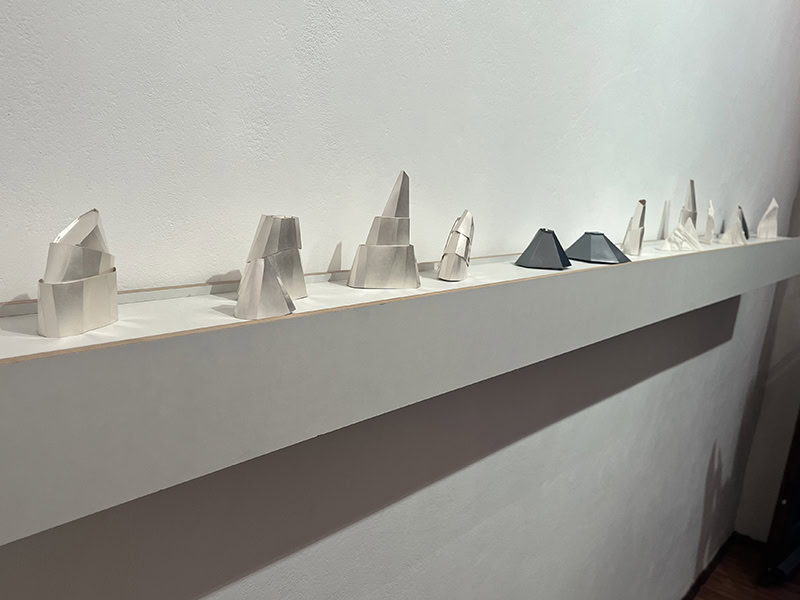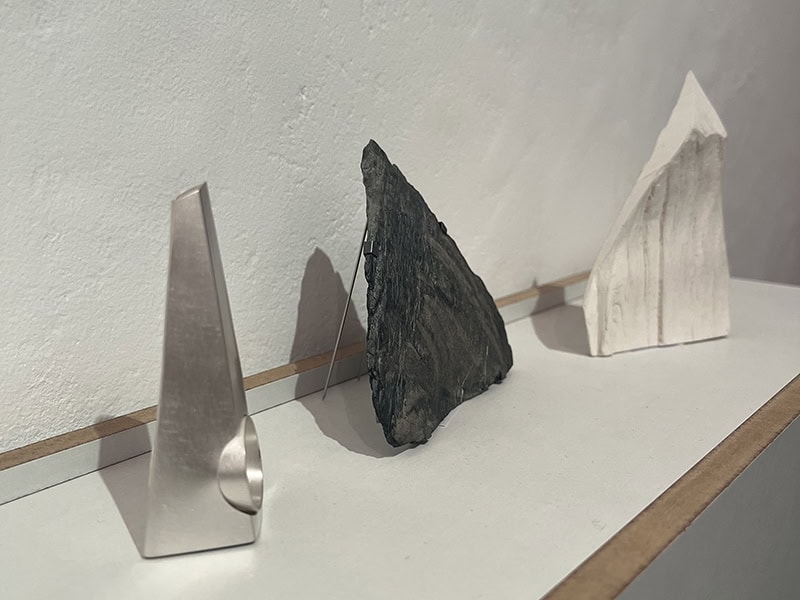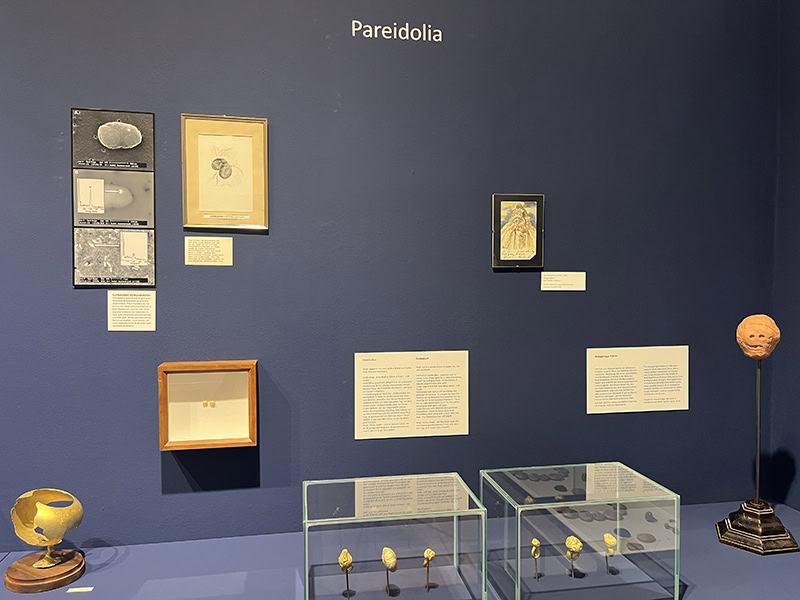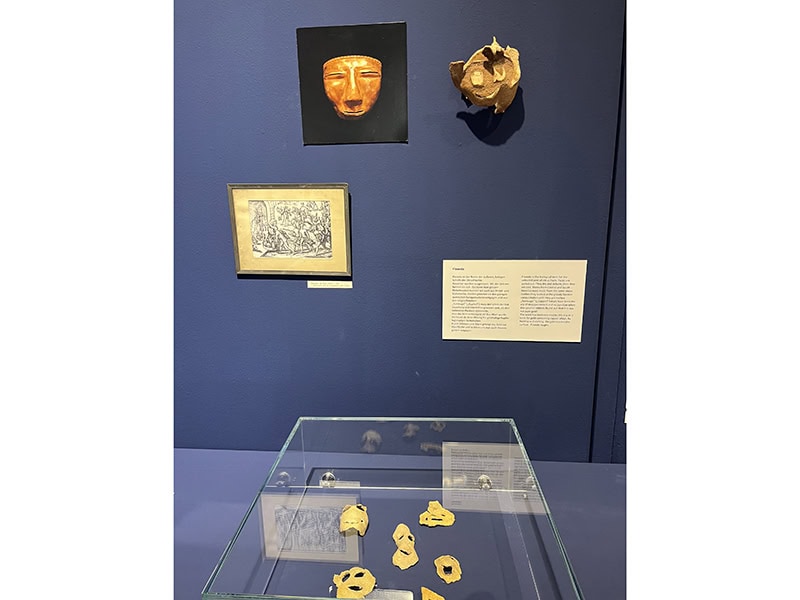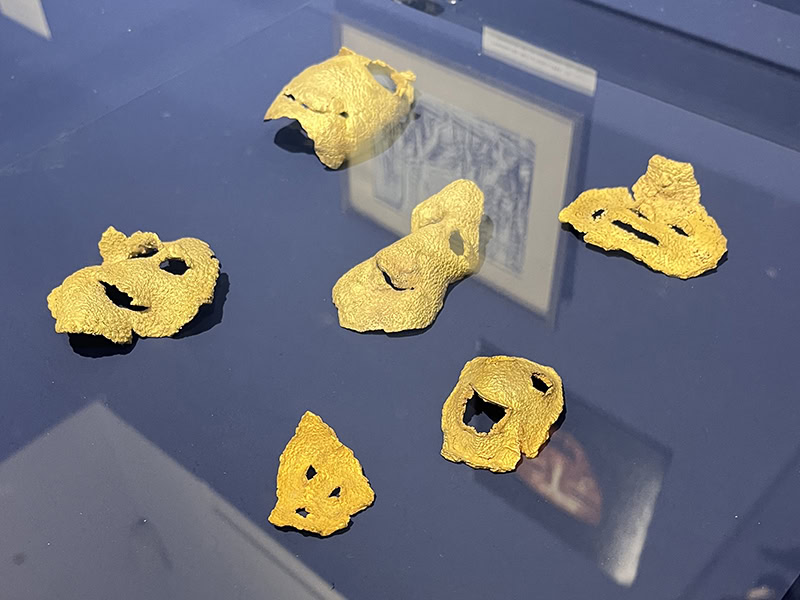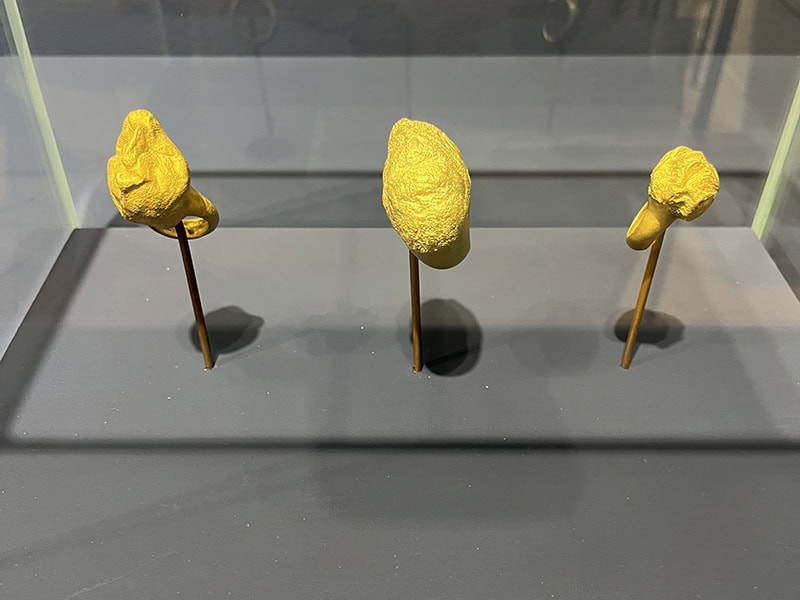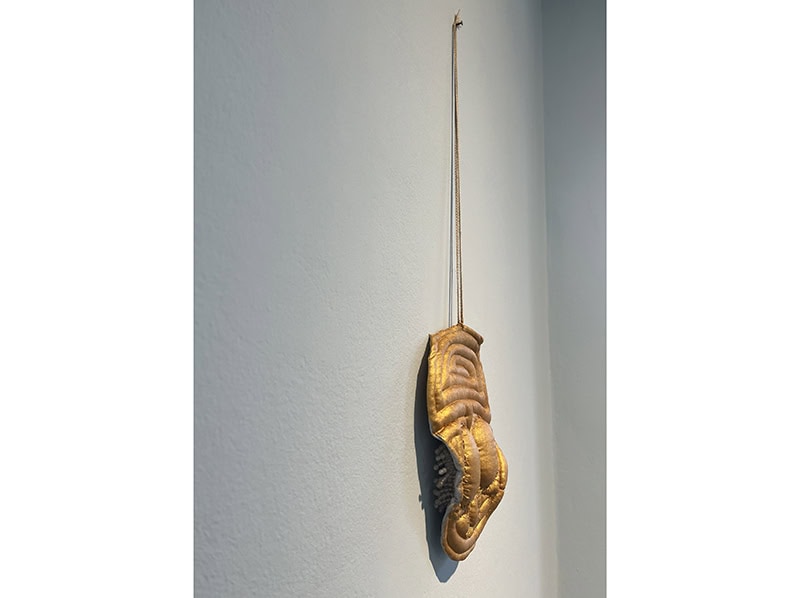
It was everything I imagined my first time would be like. Magical, filled with surprises, and deeply satisfying. I’m talking, of course, about my first time attending Munich Jewelry Week.
What happens when a beautiful European city gets turned into a contemporary art jewelry box for a week? This city-wide event brings together artists, gallery owners, museum curators, collectors, students, and jewelry fans from all over the world. Here are the shows that stood out for me—it’s by no means a complete survey or best-of—and the jewelry I still wake up thinking about.
Schmuck
The event that anchors everything is the Schmuck special exhibition held as part of the massive Internationale Handwerksmesse craft fair. The 2025 show was curated by Dr. Jurgita Ludavičiené, who chose 62 works by artists from 29 countries from an open call that received almost 800 applications.
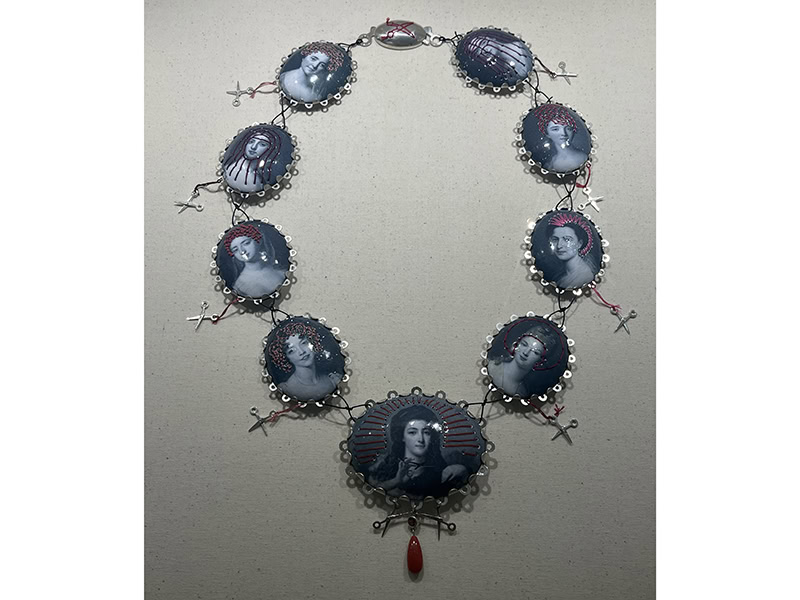
The pieces I responded to the most all also happened to make use of vintage images, using these in visual satire that employed humor to deliver incisive social commentary. For example, Nanna Obel’s Just Cut It neckpiece explores the significance of hair as a symbol of beauty and its influence on self-esteem, identity, and femininity. I was also an instant fan of Geraldine Fenn’s jewelry, which uses vintage painted miniatures as the ground for narrative pieces in a series called Colonial Comeuppance. Here, Fenn reinterprets portrait jewelry, adding silver, trade beads, and, with great results, googly eyes to comment on the European colonization of Africa.

And finally, Anna Davern’s diorama with a removable brooch made from vintage biscuit tins was part of the Charlie’s Hunt series. The work is a collage of images and symbols of the British monarchy juxtaposed with Australian flora and fauna (including invasive species introduced by British colonists). Using assemblage techniques, Davern crafts a fantastical narrative of a comical fictional prince while questioning the influence of the British monarchy on Australia.

Pink & Punk, at Galerie Platina at Frame
Alongside Schmuck, visitors can see still more jewelry at the several jewelry galleries that make up Frame, in the back corner of the Internationale Handwerksmesse.
The Pink & Punk exhibit by Platina Gallery was particularly fun to visit. Pieces embodying the spirit of punk culture, some of them deliberately ignoring the brief like Tim Carson’s this is not pink brooch, made this jewelry showcase a standout.
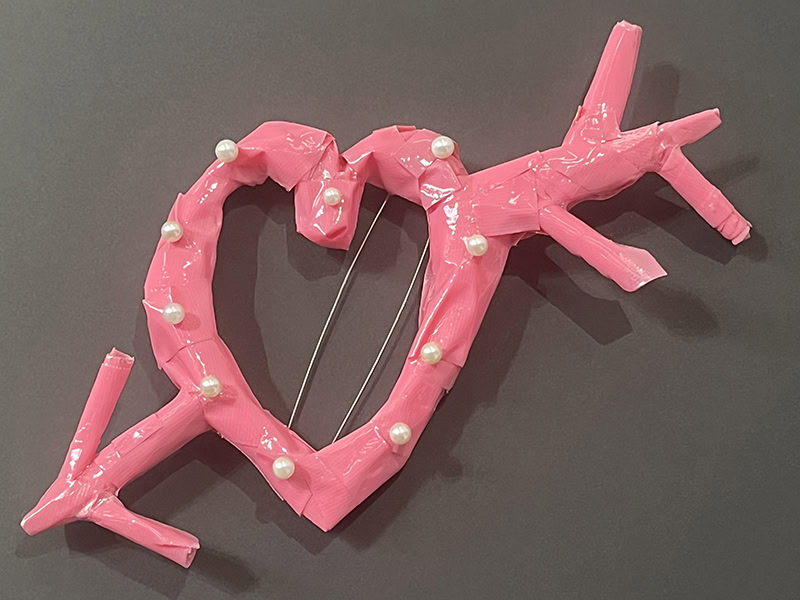
It’s always fun to see how artists punk up the demure pearl. Both Hansel Tai’s pierced baroque pearl pendants and necklaces and Réka Lörincz’s YouandMe heart-shaped brooch made from hot pink tape and punctured with pearls were edgy interpretations. Felieke van der Leest’s Boogie Woogie Flasher Bird had me ensnared the moment I clapped my eyes on it. It was a great interpretation of one of the final taboos—flashing an onlooker—but done with so much humor that you would love to have a drink with the artist and hear the story. Van der Leest’s mixing of textiles, plastics, metals, and hilarity results in work that sparks instant joy. That may be about the most punk thing you can do today.
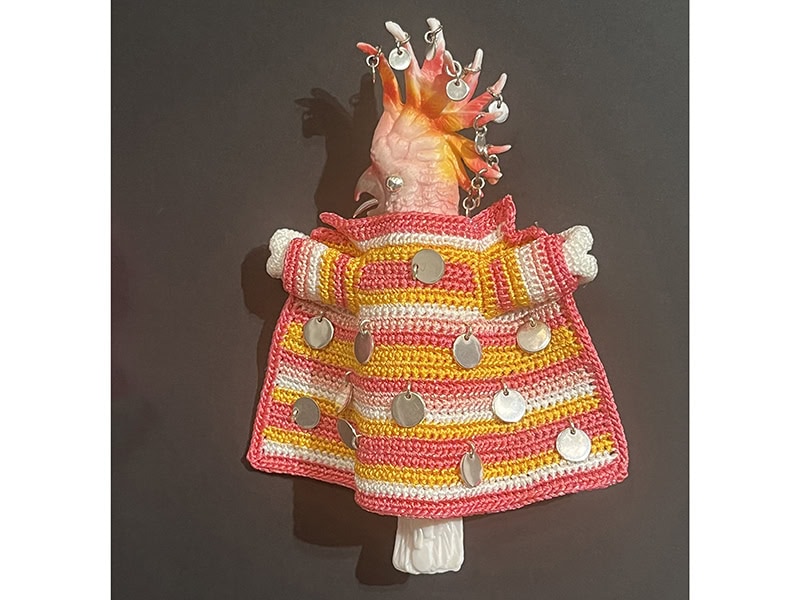
Der Berg: Therese Hilbert und Miriam Künzli
After the intensity of seeing so much work all at once at Schmuck and Frame, Therese Hilbert’s Der Berg exhibition was a mental relief from the overstimulation of larger events. Here, perfectly arranged against a white wall, were Hilbert’s most recent examples of her continued romance with nature. This time, she studied der berg (the mountain). Hilbert’s work is technically superb: austere, spare, abstract. I could have spent an entire day meditating on these works made of silver and wood.
I was still thinking about the pieces when I came across her Nase pendant from 1985 in the Danner Rotunda at Die Neue Sammlung (The International Design Museum). The formal austerity with an incredibly high level of craft—it was all already there. And to see that craftsmanship meticulously honed over four decades feels like a privilege.
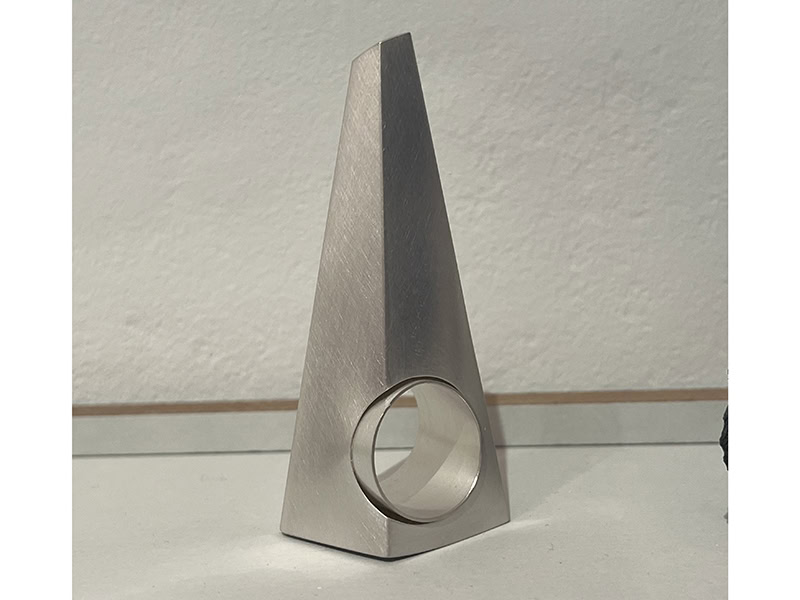
Peter Bauhuis: The Blüml Collection
It was impossible not to have a bit of a crush on Hans Blüml. His collection of jewelry by Peter Bauhuis alone was crazy. The guy obviously had taste …
This is the world you get to float about in the brilliant mind of Peter Bauhuis. Best known for his jewelry and metal objects, Bauhuis also finds creative expression in conceiving exhibitions as artwork. In Munich, Bauhuis revisits a favorite exhibition format – developing and displaying imaginary worlds as a Wunderkammer, or cabinet of curiosities.
Here, Bauhuis conjures up Hans Blüml, art historian and collector. And Blüml was an astute collector … his collection has Bauhuis’s greatest hits from the last 10 years, from the Oreichalkos rings (also in Schmuck) to his Fly pins and Flavedo brooches.
These items were beautifully laid out on one side of the gallery, balancing Bauhuis’ jewelry and small metal works with his oversized Simultanea experiments in the other half. To make these oversized forms, Bauhuis simultaneously casts different metals to create astounding vessels from copper, silver, brass, and bronze. Unpredictability is key to the process, and the cracks, holes, and fissures that emerge from different liquid metals colliding and melding are treated as part of the design. The final results are a mesmerizing display of swirling patterns and contrasting colors.
O Lecko Mio, curated by Galerie Zink, exhibited at Artcurial
You know it’s going to be a fun time just from the exhibition title: O Lecko Mio (literal translation: lick me!). And then you walk in and see five anatomically accurate, muscly ox tongues complete with life-like papillae.
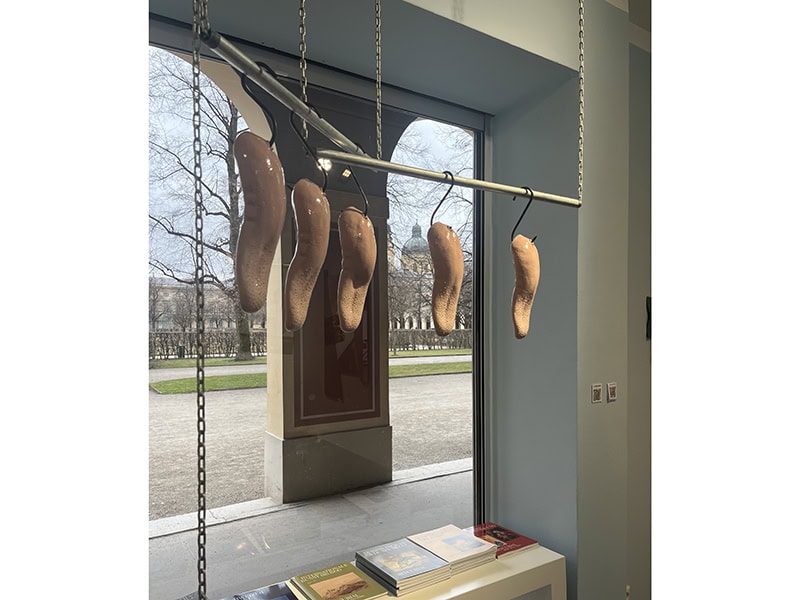
Hyper-realism in art jewelry means David Bielander. Just as you’re recovering from the shock that a material as delicate as porcelain can be made to appear heavy and dense, you’re struck by a superb example of Bielander’s “cardboard” jewelry. In Bielander’s hands, silver transforms to look like cardboard in his Crucifix.
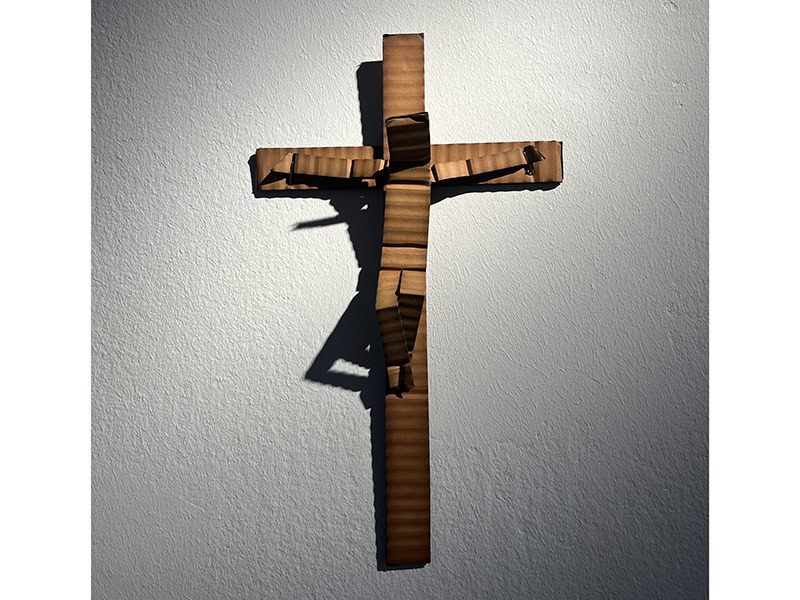
Lisa Walker and Karl Fritsch (partners in life) were the two jewelers alongside Bielander that made up the group of eight artists in this show curated by Galerie Zink. A hanging horizontal display of Fritsch’s rings sliced across the exhibition space. Fritsch uses traditional ring shapes like signet and cameo rings to display some of his favorite aphorisms (I quit, Nice, Ich weiss es nicht …) and images for our time (a person in profile in the act of vomiting—explosively). The exhibition included a ring from 1995 with four stacked cameos taking the place of the stone setting, demonstrating this remarkable maker’s ability to riff on a theme for 30 years!
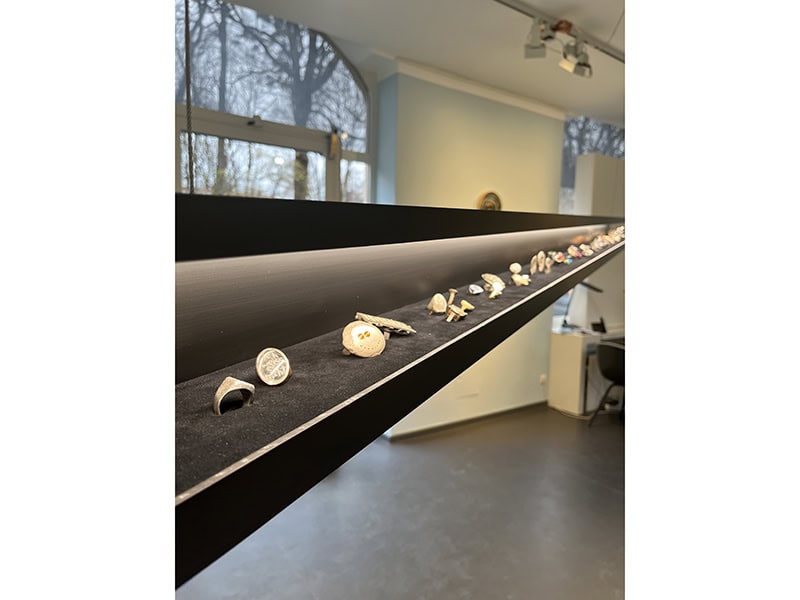
The show included Walker’s recent work from 2024 and 2025. Utilizing unconventional materials and bold forms, she consistently challenges traditional notions of beauty while making work that celebrates individuality and creativity. Combining wood, paint, textiles, and beads, these designs reveal more details the longer you look at them. Take Walker’s Bigger Eyes and Wider Foreheads with Attractive Eyelashes, which is reversible. Here, the back of the work has as much visual interest as the front, concealing a secret side (or wearer’s pleasure) that only the jeweler and wearer are in on.
Kill Your Darling, Benedict Haener at Galerie Wittenbrink
It was the day before I was to depart from Munich, and I had checked Galerie Wittenbrink’s hours more than once to make sure I knew when they closed on that rainy Sunday. Everyone had told me this exhibition was not to be missed. And boy, were they right!
Haener’s series of necklaces, bracelets, and brooches are the photographs I have shown most to my non-jewelry friends, smugly asking, “Guess what it’s made of!”
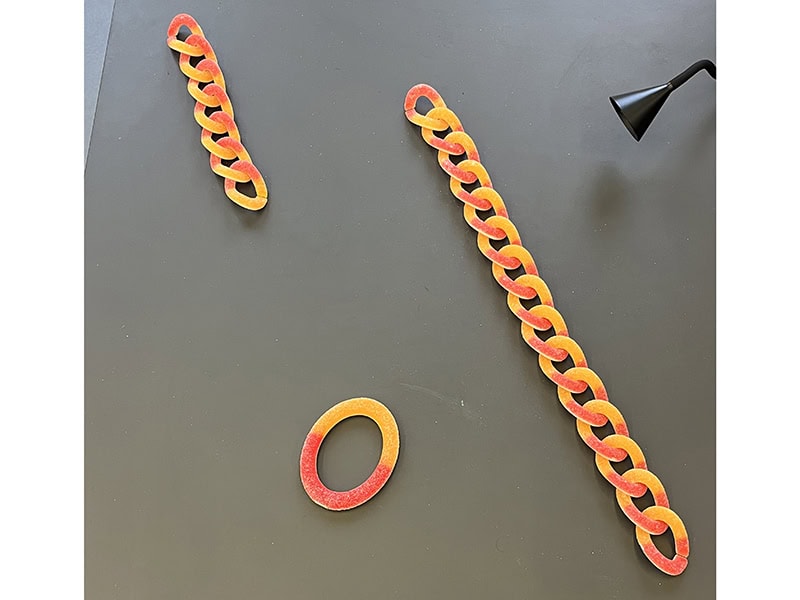
It’s impossible to look at Haener’s sour candy-inspired jewelry and believe that it is glass, resin, and diamonds and not fruit-flavored sugar and corn syrup. You know this because your tongue starts tingling with anticipation at the hit of the sour (apple or peach) flavor that inevitably comes when you take a bite of these candies with a cult-like following. Haener’s technical training in jewelry and product design combine to make these unique works that succeed in challenging value by using precious materials (“It’s diamonds!” I exclaim) to elevate everyday items like drugstore candy, sugar cubes, even sandpaper …
Conclusion
And so, with a suitcase weighed down by catalogs and maybe a few new finds, I bid Munich farewell.
In many ways, the contemporary jewelry world is a paradox. In general, it has a welcoming cohort of people, many of whom are generous with sharing their knowledge. I listened to insightful critiques, met legends, and experienced many moments of delight over the course of the week. I attended exhibitions that were brimming over with attendees, making me hopeful for the field and emerging makers. On the other hand, I heard more than one conversation fretting about the need for new collectors, hand wringing about the center of the contemporary art jewelry world shifting away from Europe, and the difficult economics of gallery ownership.
Yet despite concerns about the future of contemporary art jewelry, the excitement and enthusiasm were palpable. Work celebrated artistry and innovation, and underscored the resilience and creativity of contemporary jewelers while reminding us of the appeal of jewelry as a form of personal expression.
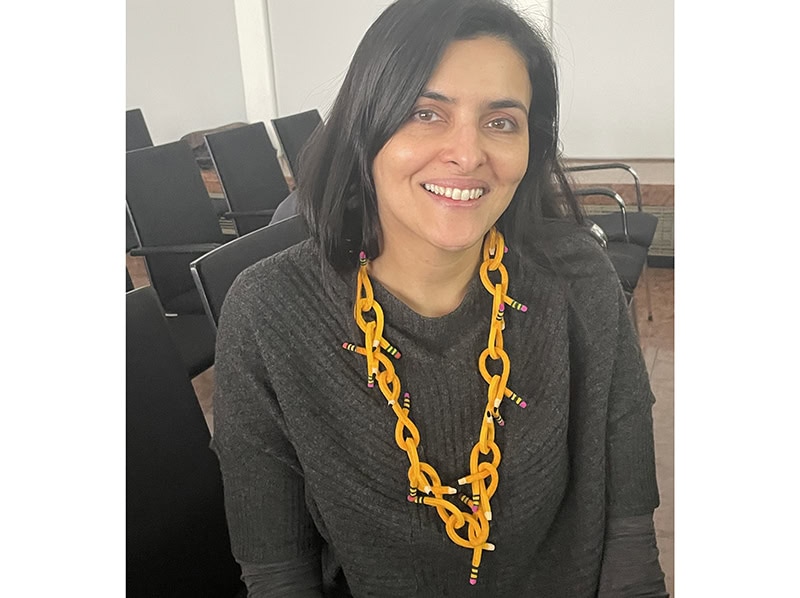
We welcome your comments on our publishing, and will publish letters that engage with our articles in a thoughtful and polite manner. Please submit letters to the editor electronically; do so here.
© 2025 Art Jewelry Forum. All rights reserved. Content may not be reproduced in whole or in part without permission. For reprint permission, contact info (at) artjewelryforum (dot) org
Trending Products


